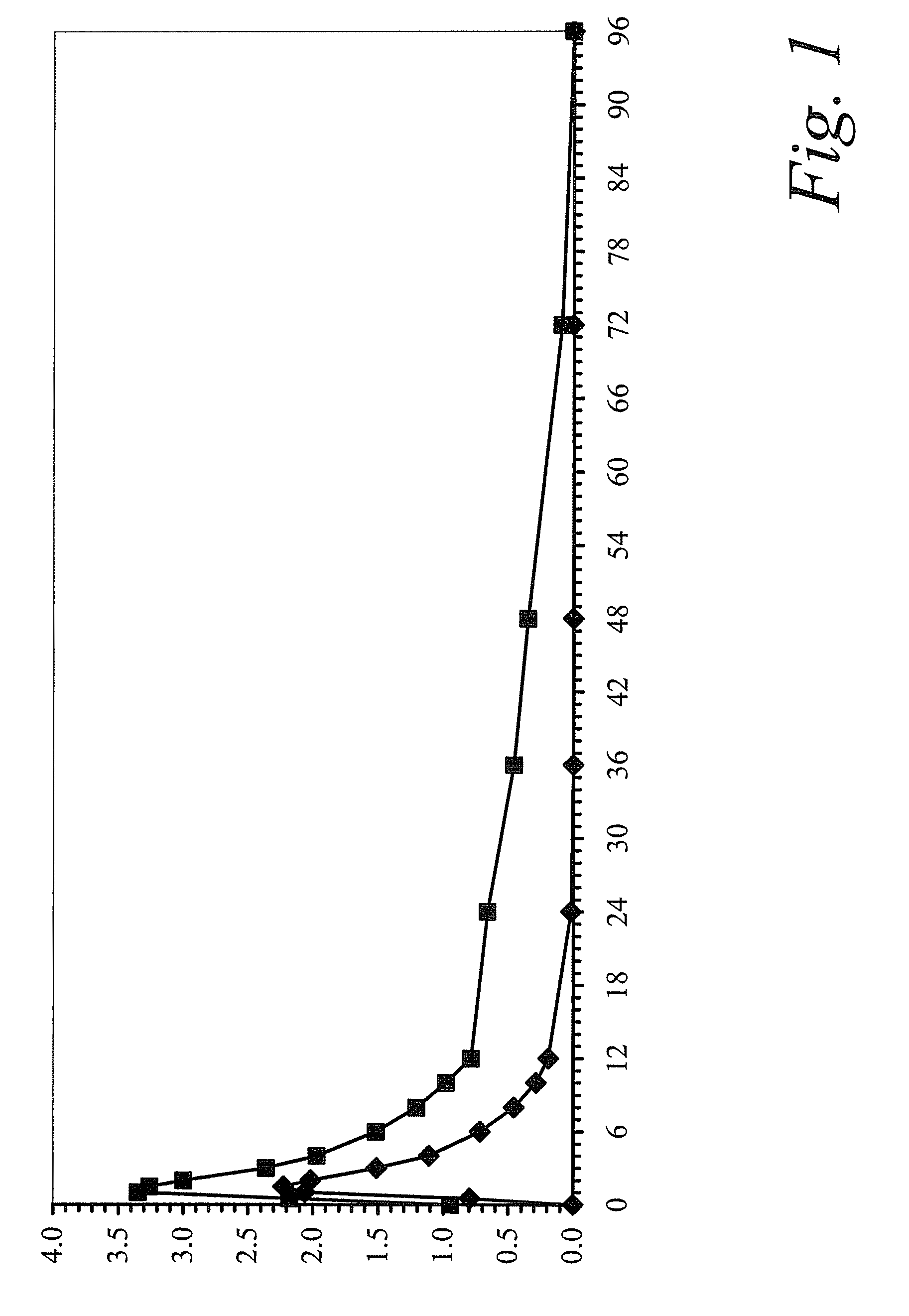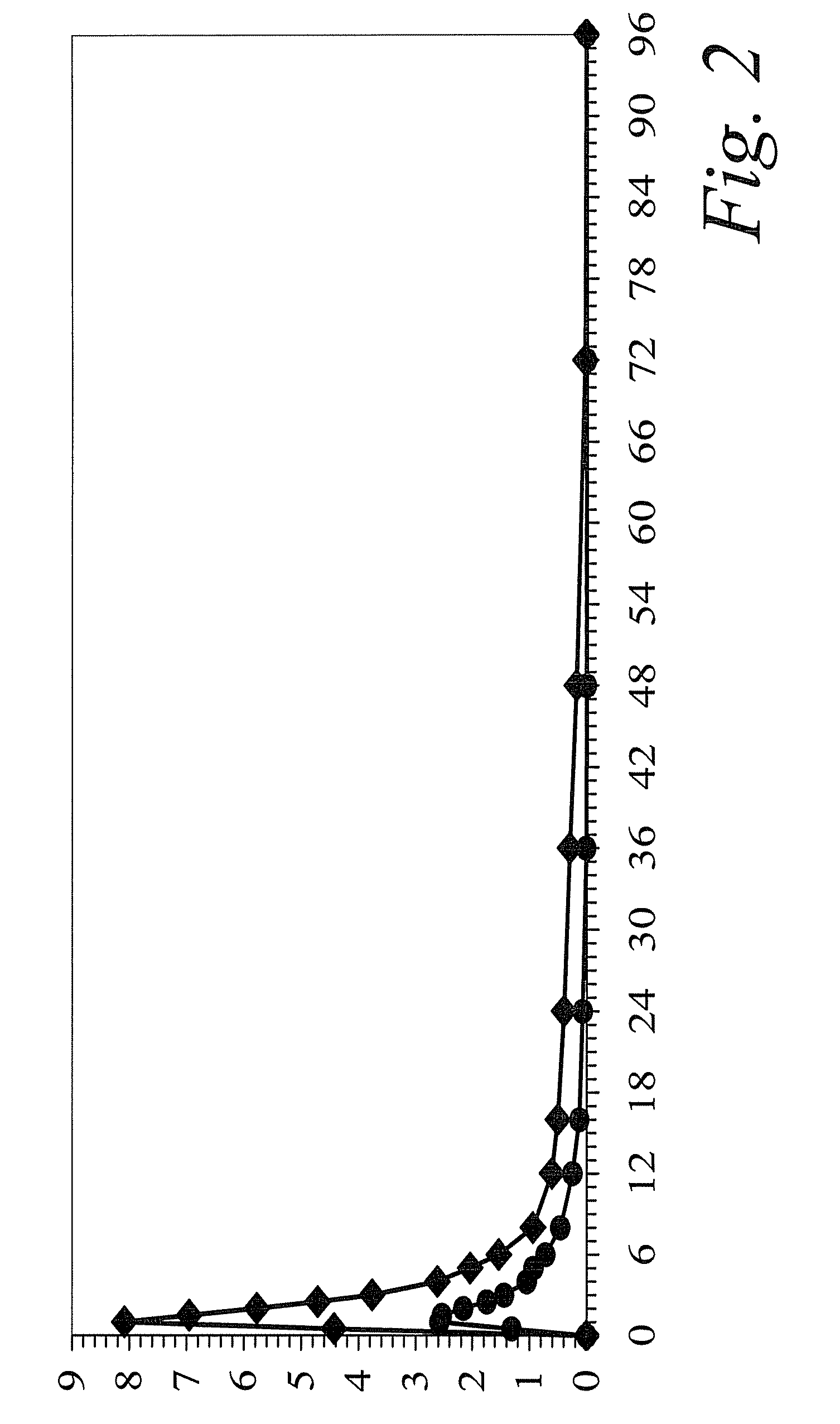Methods for concomitant administration of colchicine and macrolide antibiotics
- Summary
- Abstract
- Description
- Claims
- Application Information
AI Technical Summary
Benefits of technology
Problems solved by technology
Method used
Image
Examples
example 1
Pharmacokinetic Study in Healthy Adults of Single Vs. Multiple Oral Doses of Colchicine Tablets
[0105]This study was a single-center, open-label, single-sequence, two-period study to evaluate the pharmacokinetic profile of colchicine following single and multiple oral doses of colchicine tablets, 0.6 mg, in healthy volunteers.
[0106]In Period 1, study subjects received a 0.6-mg dose of colchicine after an overnight fast of at least 10 hours. In Period 2, subjects received a 0.6-mg dose of colchicine in the morning and the evening (approximately 12 hours later) for 10 days (steady state regimen). Subjects received a light breakfast served 60 minutes following dose administration in the morning and the evening dose was administered 90 minutes after an evening meal on Days 15 through 24 only. On Day 25, the colchicine dose was administered after an overnight fast of at least 10 hours and lunch was served 4 hours post-dose. Study periods were separated by a 14-day washout. Following the s...
example 2
Clinical Drug-Drug Interaction Study of Colchicine and Clarithromycin
[0117]A single-center, open-label, one sequence, two-period study was carried out in 23 healthy subjects. On Day 1, a single 0.6-mg dose of colchicine was administered. After completing a 21-day washout period, all subjects received 250 mg of clarithromycin administered twice daily for 7 days (Days 22 through 29), a sufficient dose and duration to inhibit CYP3A4 and Pgp. On the final day (Day 29), a single dose of colchicine was co-administered with the clarithromycin dose.
[0118]When combined with steady-state clarithromycin, there is a significant increase in exposure to colchicine as compared to when colchicine is given alone: the mean Cmax and AUC0-τ concentrations increased 167% and 250%, respectively. In addition, co-administration of clarithromycin and colchicine resulted in an increase of 233% in the plasma elimination half-life (t½) of colchicine and a 75% decrease in apparent clearance (CL / F). A summary of...
PUM
| Property | Measurement | Unit |
|---|---|---|
| Fraction | aaaaa | aaaaa |
| Mass | aaaaa | aaaaa |
| Mass | aaaaa | aaaaa |
Abstract
Description
Claims
Application Information
 Login to View More
Login to View More - Generate Ideas
- Intellectual Property
- Life Sciences
- Materials
- Tech Scout
- Unparalleled Data Quality
- Higher Quality Content
- 60% Fewer Hallucinations
Browse by: Latest US Patents, China's latest patents, Technical Efficacy Thesaurus, Application Domain, Technology Topic, Popular Technical Reports.
© 2025 PatSnap. All rights reserved.Legal|Privacy policy|Modern Slavery Act Transparency Statement|Sitemap|About US| Contact US: help@patsnap.com


